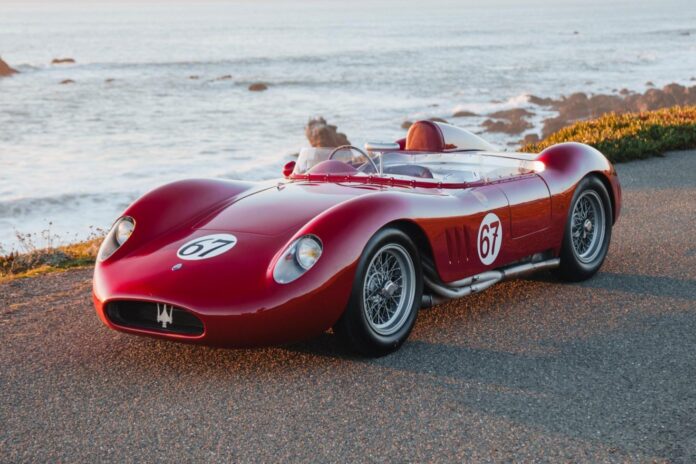This 1957 Maserati 200SI is one of 28 examples of the Sport Internazionale variant built during a single year of production and was designated for delivery to Maserati of America in July 1957 but is believed to have instead been retained as a factory works car. Chassis 2425 was reportedly driven to a class victory at the Giro di Sicilia in Italy and an overall victory at the Grand Prix Cadours in France before being shipped to North America. Under the ownership of Dick Hall’s Carroll Shelby Sport Cars, Inc., of Dallas, Texas, the car was driven by Jim Hall in SCCA events through the remainder of 1957, with results including three second-in-class finishes at Hourglass and Palm Springs. It was then driven by privateer Bob Kuhn at Watkins Glen and Lime Rock in 1958 before later being sold to U.S. Navy veteran and Clean Air Act co-author Otto Klein, who piloted it in several SCCA contests between 1962 and 1964 with a Chevrolet engine reportedly fitted toward the end of that three-year campaign. The car was later sold by Klein to its next owner, who is said to have commissioned a mechanical refresh that included a displacement increase of the twin-cam inline-four to 2.5 liters. Under subsequent ownership, it participated twice in the Mille Miglia Storico in the 1980s before being sold to a London collector who commissioned a refurbishment. It was then purchased by a German owner who had a reproduction 2.5-liter engine installed before campaigning the car at historic events at Vallelunga, Spa, and Nürburgring. The car was purchased in 2007 by its current owner, who brought it to the US and commissioned further mechanical refurbishment work before it made several Monterey Historics appearances over the ensuing years. In 2024, the car participated in the Pebble Beach Concours d’Elegance and was later reissued an FIA Historical Technical Passport. Featuring Fantuzzi-built aluminum spyder bodywork finished in red, the car is powered by a reproduction 2.5-liter DOHC inline-four that features an aluminum block and cylinder head, dry-sump lubrication, twin-plug ignition, and twin Weber DCO3 carburetors. Additional features include a four-speed manual transmission, finned aluminum drum brakes, independent front suspension, a De Dion rear axle, 16” Borrani wire wheels, riveted aluminum fuel and oil tanks, a passenger-side tonneau panel, and bucket seats upholstered in red leather. A collection of parts accompanying the car includes its removed Tipo 4CF2 inline-four wearing a stamp of chassis number 2425, a transmission, and a differential. This Tipo 52 Sport Internazionale is now offered on dealer consignment in Emeryville, California, with factory documents, a Maserati Certificate of Origin, an FIA Historic Technical Passport, an HSMA logbook, and a clean Oregon title.
Maserati began development of a four-cylinder sports car in 1953 under the internal project name Tipo 52, which was later divided into the 150S and larger-displacement 200S platforms. After experimentation with three Fiandri-bodied in-house-built chassis with rigid axles, Maserati began underpinning the 200S with a De Dion-axle Gilco chassis that was clothed in open bodywork by Carrozzeria Fantuzzi. The 200SI variant was introduced in 1957 with updates compliant to evolving international rules, including a full-width windscreen with a wiper and a rudimentary soft top.
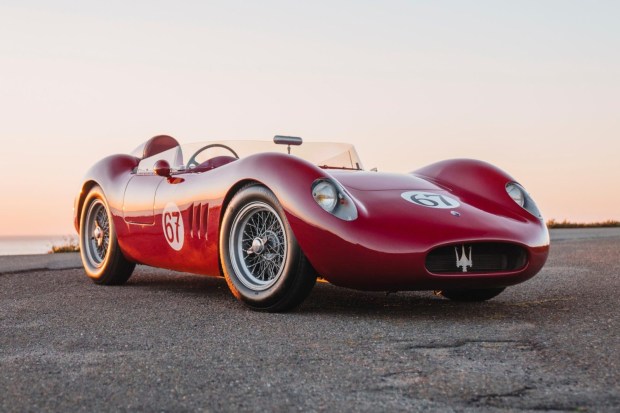
This example’s aluminum Fantuzzi bodywork was refinished in red during a refurbishment performed under previous ownership, and various areas are said to have been freshened under current ownership. Features include removable hood and trunk panels with drilled release handles, curved hood and fender louvers, faired-in headlights, a wrap-around plexiglass windshield, a driver-side mirror, a body-color aluminum passenger-side tonneau panel with a windscreen segment, a removable headrest fairing, a central taillight, and four-into-one side-pipe exhaust.
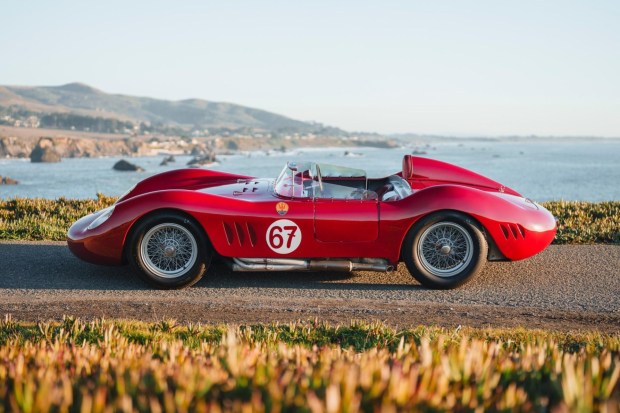
Silver-painted Borrani wire wheels are secured by two-eared knock-offs and are wrapped in 5.50-16 Dunlop Racing tires. Stopping is handled by hydraulic brakes with duplex actuation inside 320mm-diameter aluminum finned and ventilated drums.
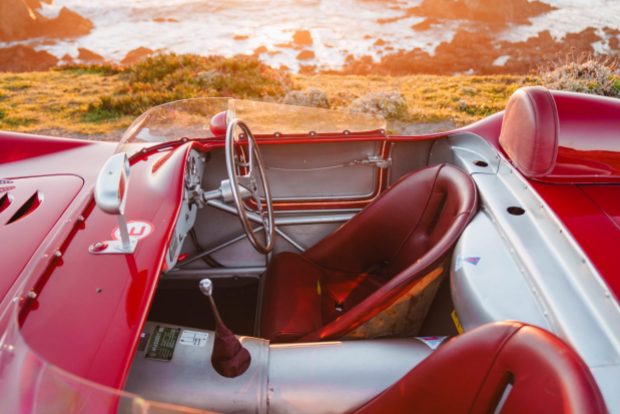
The right-hand-drive cockpit houses a pair of ventilated fixed-back bucket seats trimmed in red leather and surrounded by painted interior surfaces. Additional equipment includes a Sabelt driver-side lap belt, a passenger-side lap belt, a central shifter with a polished knob, a dashboard-mounted rearview mirror, and a fire-suppression system.
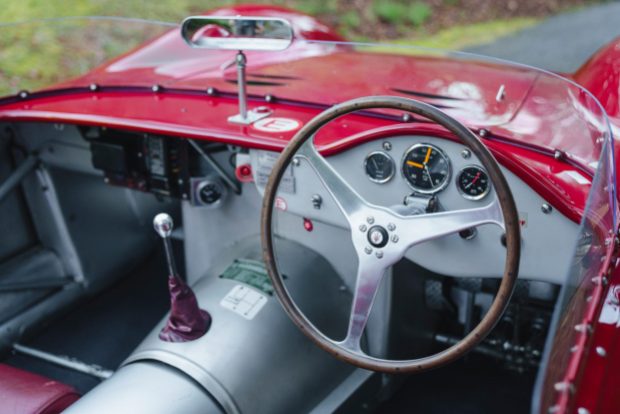
The wood-rimmed steering wheel sits ahead of a Jaeger 8,500-rpm tachometer and gauges monitoring oil pressure and coolant temperature. The car is not equipped with an odometer, and total mileage is unknown.
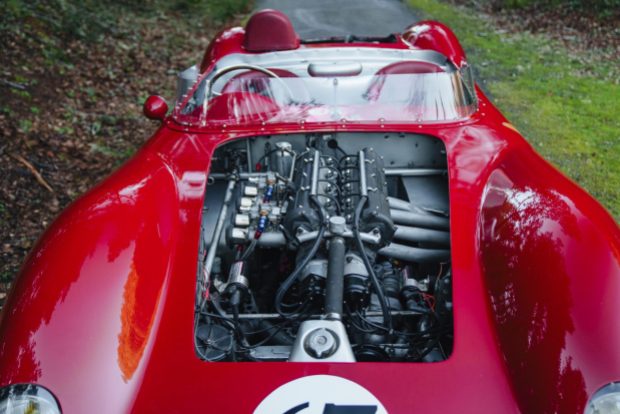
The 2.5-liter inline-four is said to have been originally built by Olaf Kuester in the late 1990s and features an aluminum block and cylinder head, dry-sump lubrication, dual overhead camshafts, twin Weber 45 DCO3 carburetors, and twin-plug ignition. The engine is said to have been overhauled by Rick Bunkfeldt’s Vintage Restoration Services in Hartland, Wisconsin, under current ownership. The rear compartment houses riveted aluminum fuel and oil tanks, the former of which is lined with a fuel bladder.
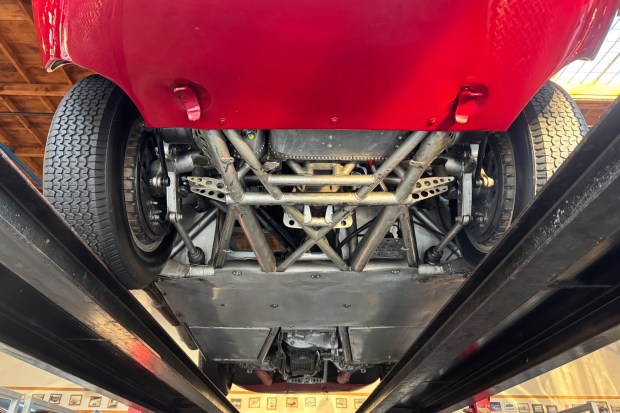
Power is sent to the rear wheels via a four-speed manual transmission. Suspension incorporates coil-sprung independent front suspension and a De Dion rear axle with a transverse leaf spring. Houdaille shock absorbers are utilized at front and rear.
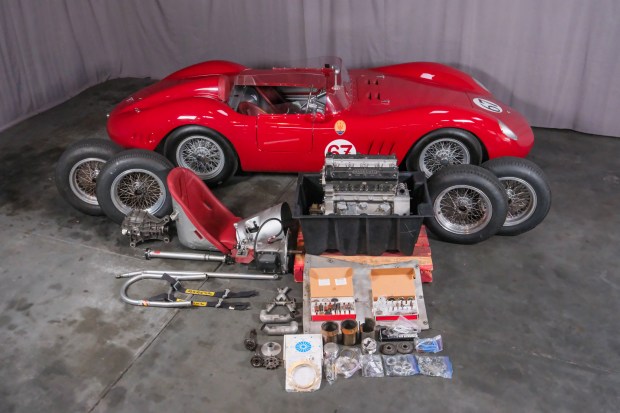
A collection of parts that accompanies the car includes the Tipo 4CF2 inline-four that was removed under previous ownership, and chassis number 2425 can be seen stamped on the block in the photo gallery below. Also included are a transmission, a shifter assembly, a rear differential unit, a seat upholstered in red leather, a set of wire wheels wrapped in Dunlop Racing Tires, and various other parts.
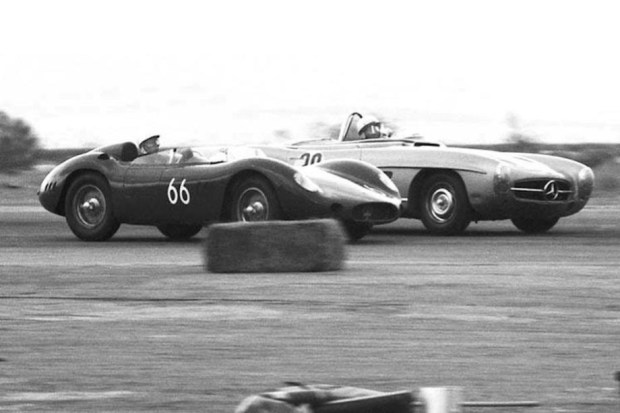
The car is shown above during SCCA competition in period in a photo supplied by Allen R. Kuhn, and additional period photos, also courtesy of Kuhn, can be seen in the gallery along with images of the car during historic races and at the 2024 Pebble Beach Concours d’Elegance under current ownership.
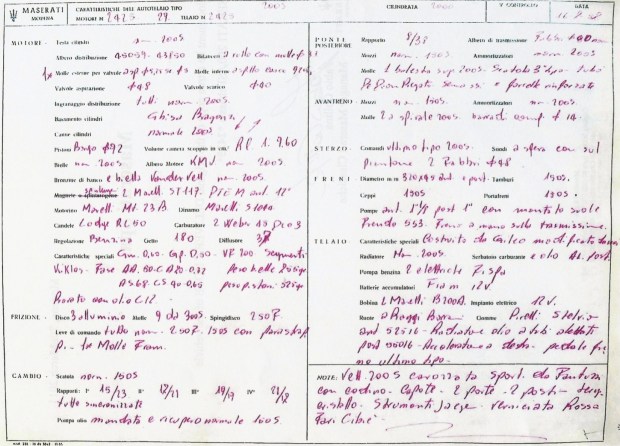
The car’s factory build sheet is shown above, and its avviso spedizione and Maserati Certificate of Origin are viewable in the gallery, as is an FIA Historic Technical Passport showing an expiration date of December 2034.
You are not connected to real-time updates. Attempting to connect.
Your real-time updates could not be connected. Missed updates will be sent once your connection has been reestablished.
Your real-time updates could not be connected. Missed updates will be sent once your connection has been reestablished.
Your real-time updates could not be connected. Missed updates will be sent once your connection has been reestablished.
